Lilly pillies are a popular garden and hedging plant, and are sold in a variety of species with many cultivars and some hybrids. In nature, they are often seen growing in wet forests and along streams.
Below are key identifying features of four local and four non-local lilly pilly species seen around Sydney.
Acmena smithii (Common Lilly Pilly)
Acmena smithii can be identified by its channelled midvein, bluntly pointed leaf tips and duller more veiny leaves. It can also be identified by its rounded fruit that lacks calyx lobes (teeth like folds on the top of the fruit that are present in the local Syzygiums). The bark typically has finer tessellation than other local lilly pillies. There are many cultivars of Acmena smithii sold in Sydney and their look can vary drastically.
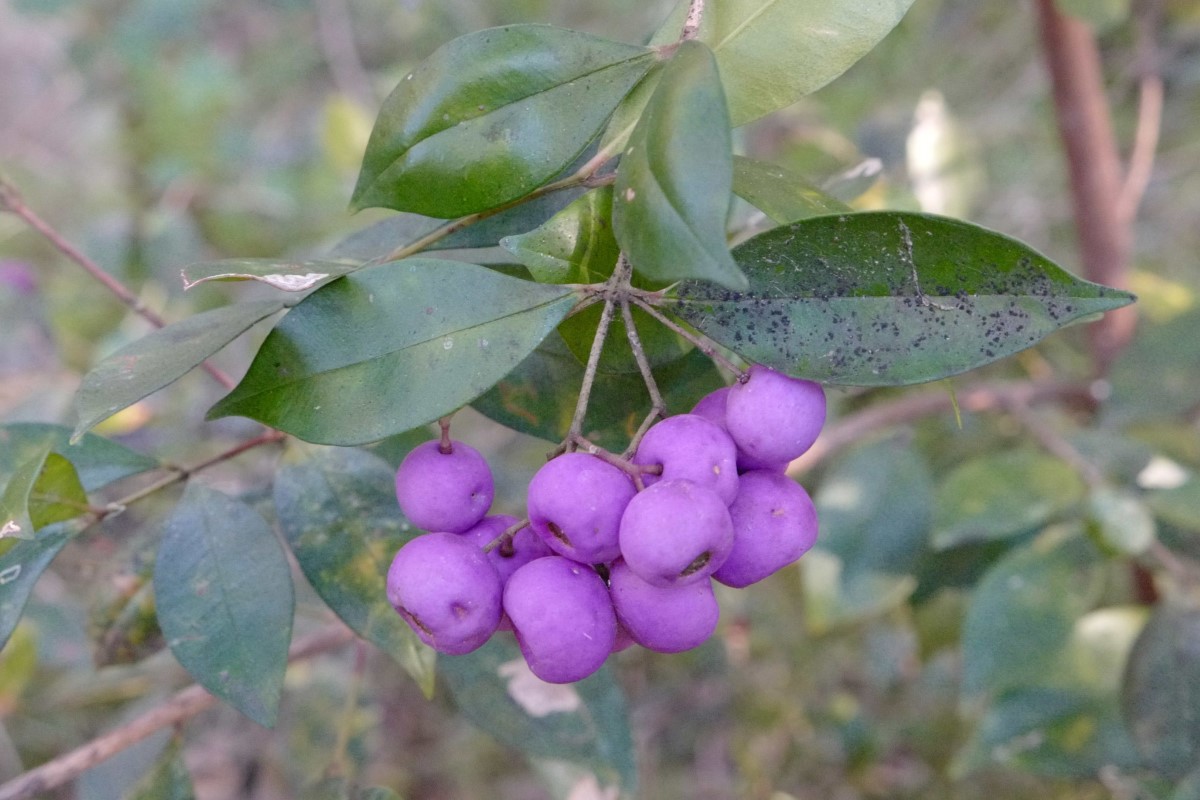
Typical fruit and leaves of Acmena smithii
Syzygium australe (Brush Cherry)
Syzygium australe can be easily identified by the winged stems and humps at the leaf nodes of the new growth. The young leaves of Syzygium australe also have a distinct curved look that is less common in other lilly pillies. The leaf tips of Syzygium australe typically have a short point rather than a drawn out point. The fruit of Syzygium australe is red, slightly square in cross-section, with distinct calyx lobes. The bark is lighter in colour than other local lilly pillies. Syzygium australe is often planted for hedges.
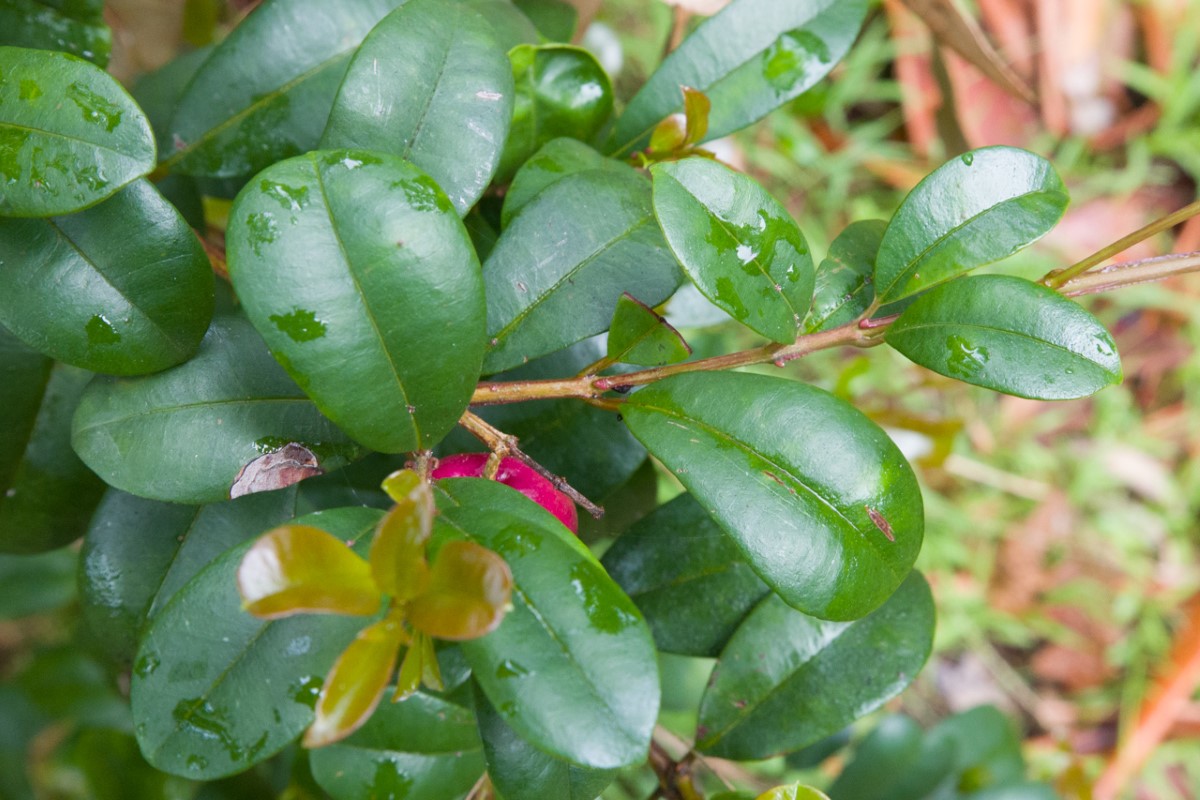
Youngish growth of Syzygium australe
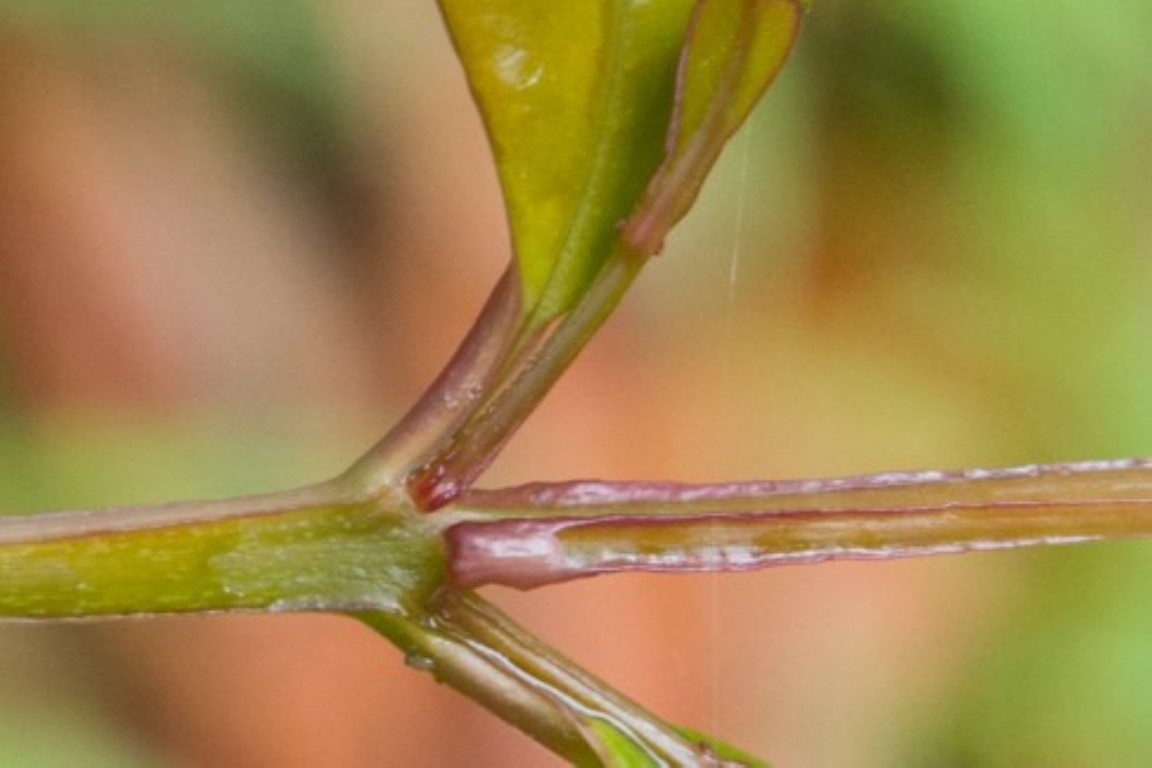
Wings and humps on new growth of Syzygium australe

Fruit of Syzygium australe
Syzygium oleosum (Blue Lilly Pilly)
Syzygium oleosum can be easily identified by the large translucent oil dots in its leaves. To see these dots either look through a leaf toward the light or shine a phone torch through a leaf. The leaf tips of Syzygium oleosum typically have a long drawn out point and the leaves are widest at or below the middle. The leaves have a long lasting citrus smell when crushed. The fruit is typically blue. Syzygium oleosum is not common in gardens.
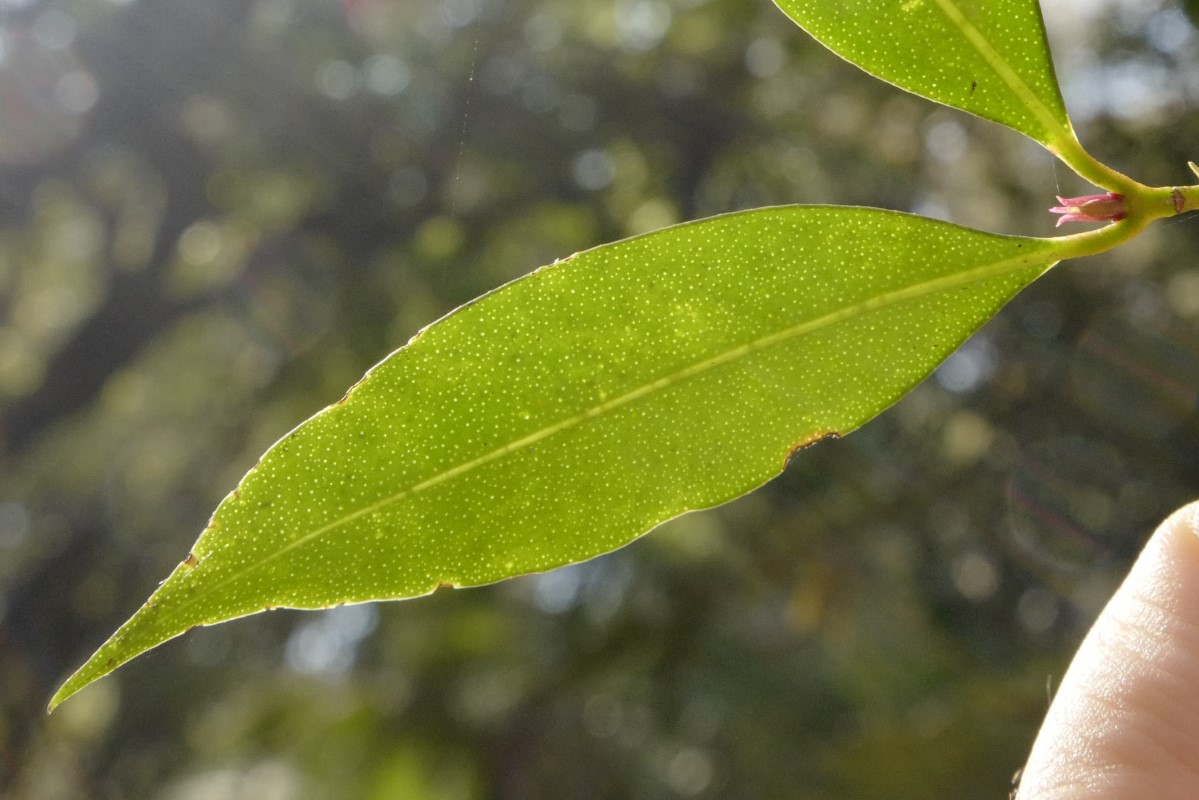
Large translucent oil dots of Syzygium oleosum
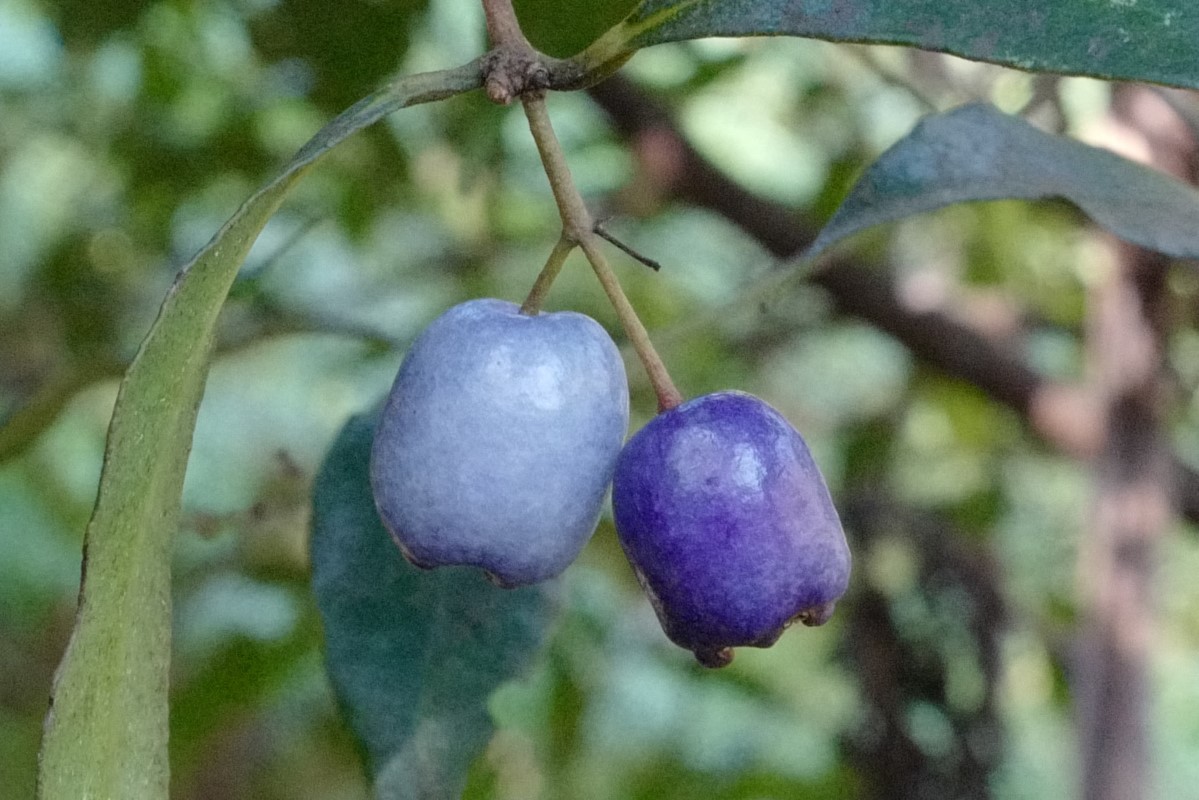
Fruit of Syzygium oleosum
Syzygium paniculatum (Magenta Lilly Pilly)
Syzygium paniculatum can often be identified by looking at the combination of features and eliminating other options. Identification can be confirmed by pulling apart a fruit and looking for multiple embryos in the seed. The leaf tips typically have an extended point that is longer than the short point of Syzygium australe, but not so drawn out as Syzygium oleosum. The midvein is often flatter. The new growth has a distinct dark red, especially in younger plants. The fruit is magenta and is often more rounded than Syzygium australe. The leaves produce a brief citrus smell when crushed. Syzygium paniculatum appears to be sold less these days, but it is common to see planted around Sydney (and Melbourne).
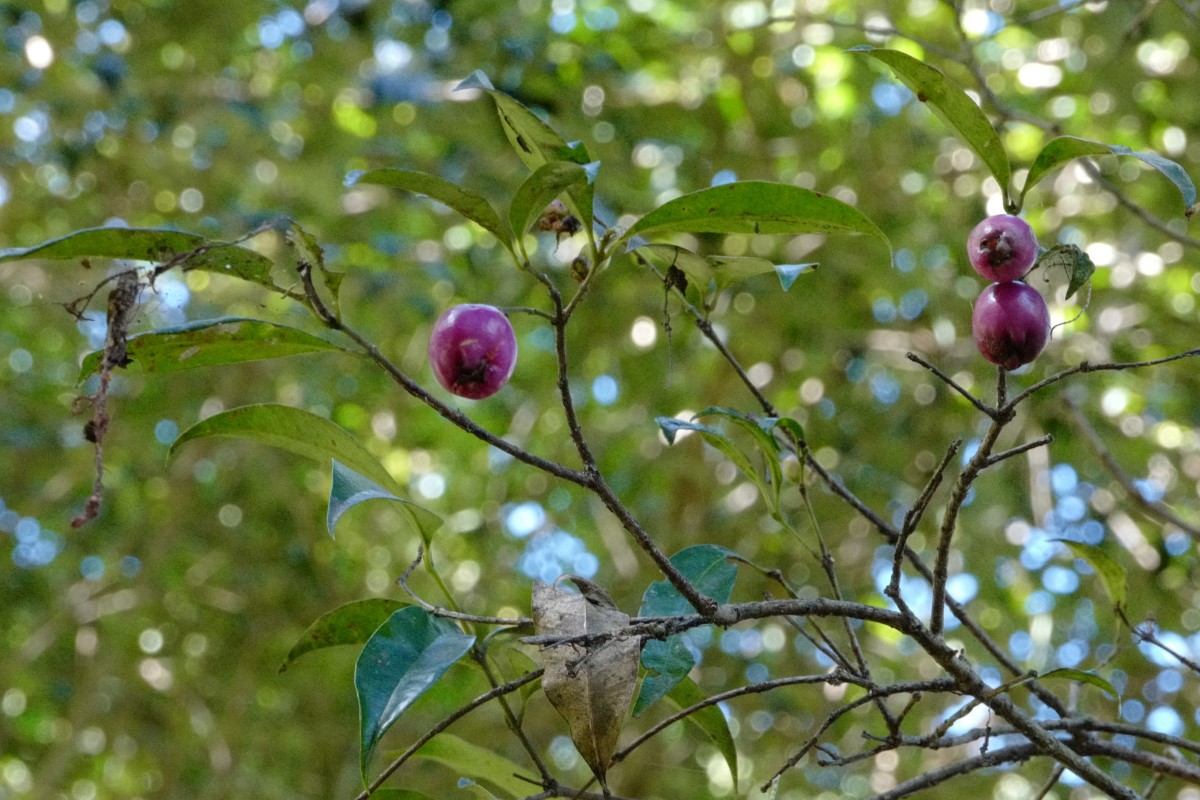
Leaves and fruit of Syzygium paniculatum

Leaves, fruit and seed of Syzygium paniculatum
Syzygium leuhmannii (Riberry)
Syzygium leuhmannii is a tree from northern NSW that is planted as a street tree around Sydney and sold in some nurseries. It is usually easy to identify from its distinct leaf shape with a round base merging into a long blunt tip. It can also be quickly recognised by its smaller leaves and attractive pink new growth.
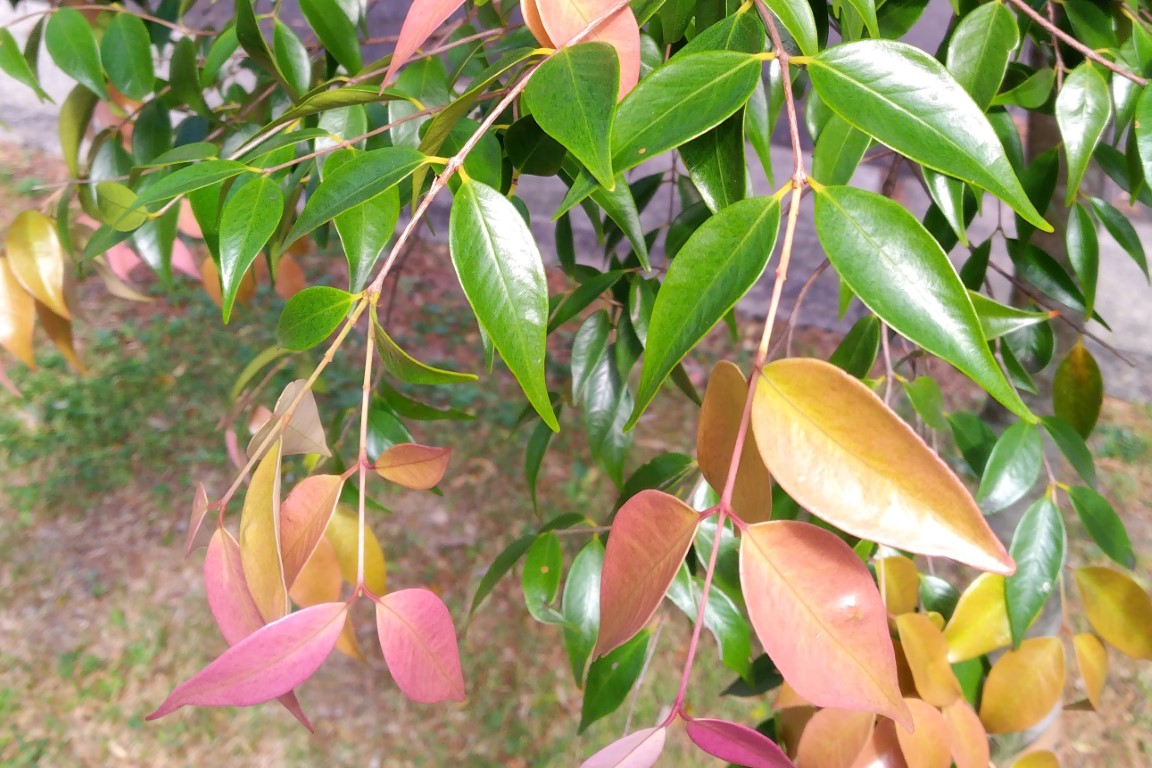
Leaves of Syzygium leuhmannii
Syzygium wilsonii (Powderpuff Lilly Pilly)
Syzygium wilsonii is a tree from far north QLD that is sold in some nurseries and was hybridised with Syzygium leuhmannii to make Syzygium 'Cascade'. Syzygium wilsonii has large red flowers and thick longish leaves with rounded or heart-shaped bases.

Flower and leaves of Syzygium wilsonii
Waterhousea floribunda (Weeping Lilly Pilly)
Waterhousea floribunda is a tree from northern NSW that can be recognised by its long shiny leaves with wavy margins and a large number of lateral veins. The undersides of the leaves are green. The bark is quite distinct, often having a high contrast stripy look before it is old enough to become flaky. Waterhousea floribunda is common to see in gardens and as a street tree around Sydney.
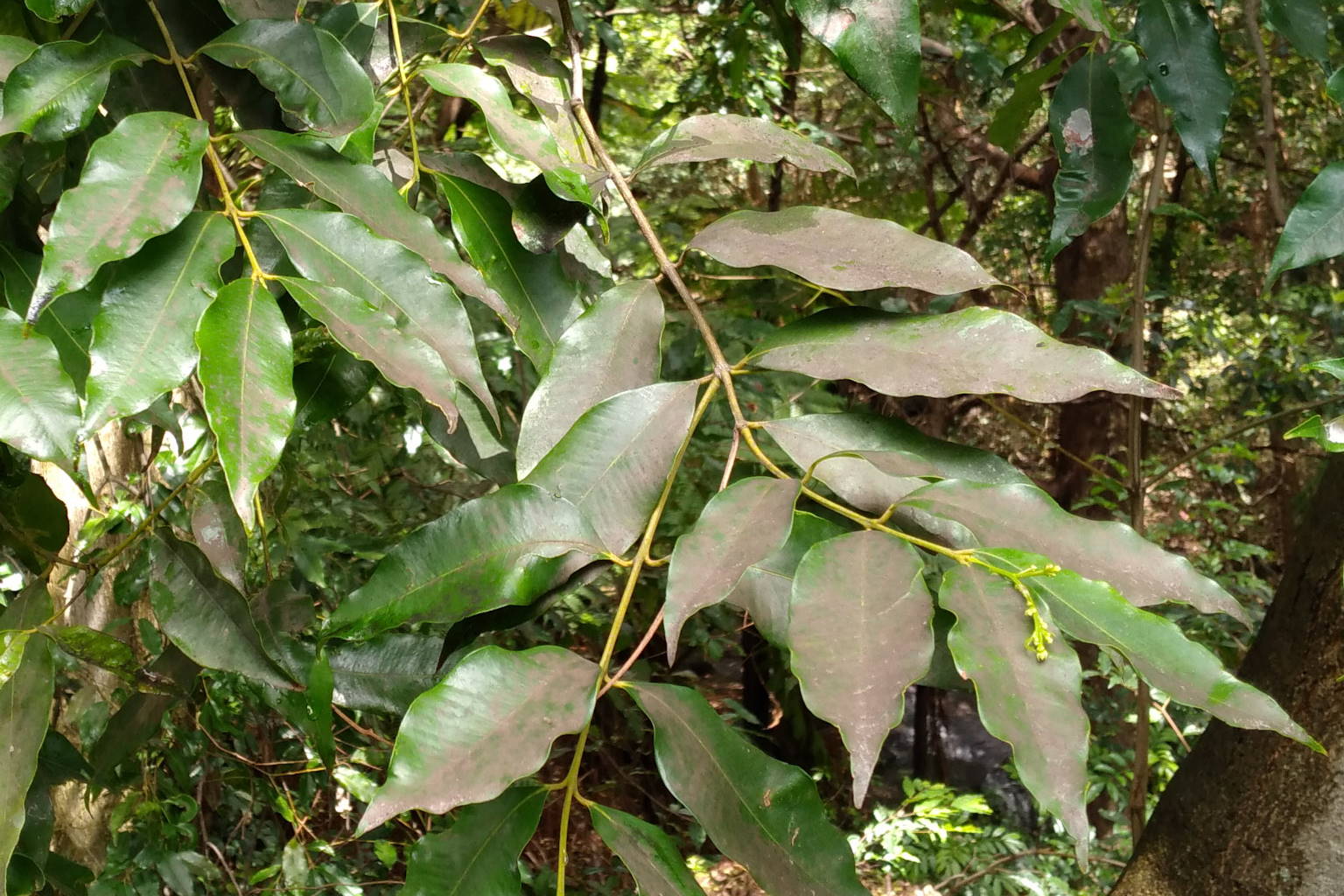
Leaves of Waterhousea floribunda
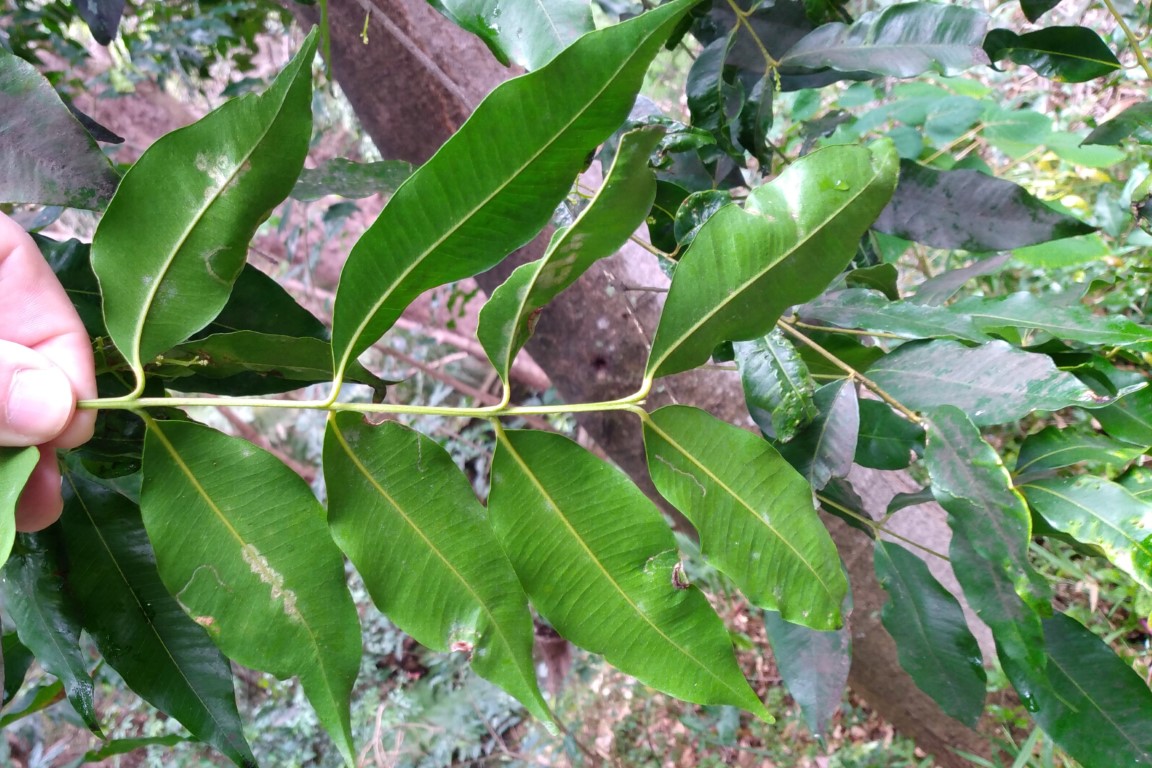
Underside of leaves of Waterhousea floribunda
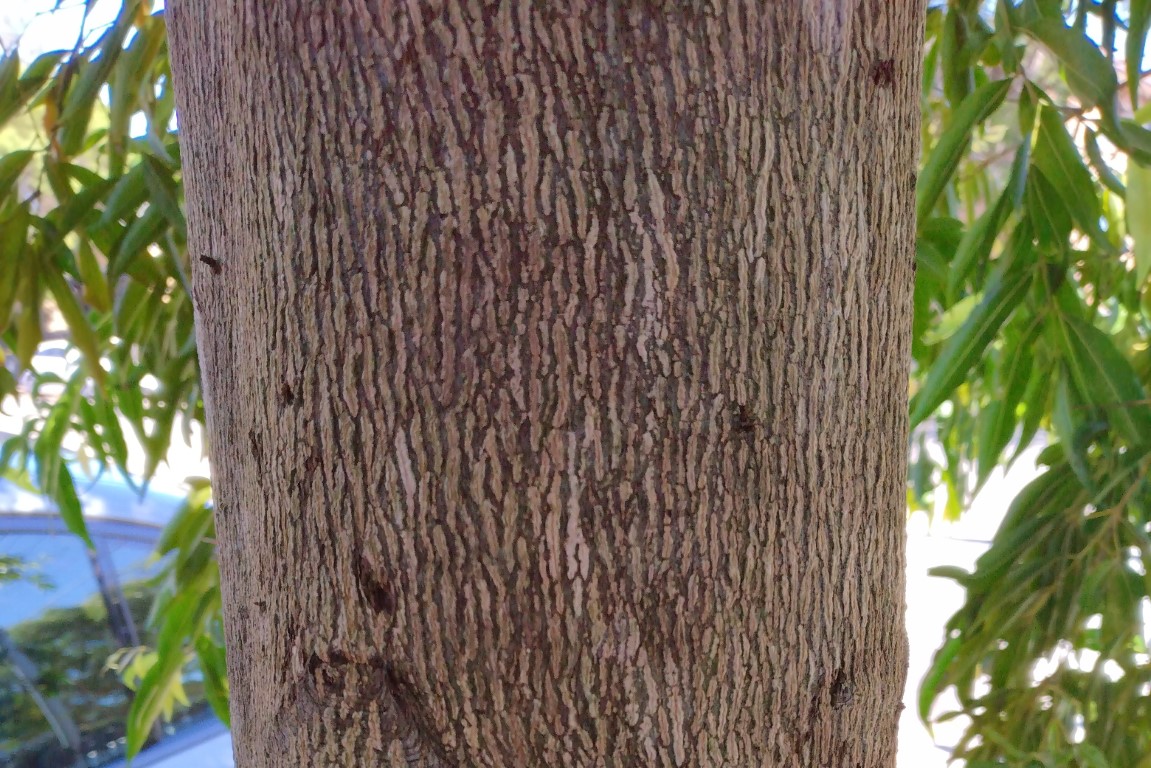
Bark of younger Waterhousea floribunda
Acmena ingens (Red Apple)
Acmena ingens is a tree from northern NSW that is sometimes planted around the suburbs. The leaves are thick with a large number of lateral veins and a distinct intramarginal vein. The leaf margins are often wavy. Young leaves have red petioles (leaf stalks) and often also red midveins. The tops of the leaves are duller than Waterhousea floribunda and the undersides paler.
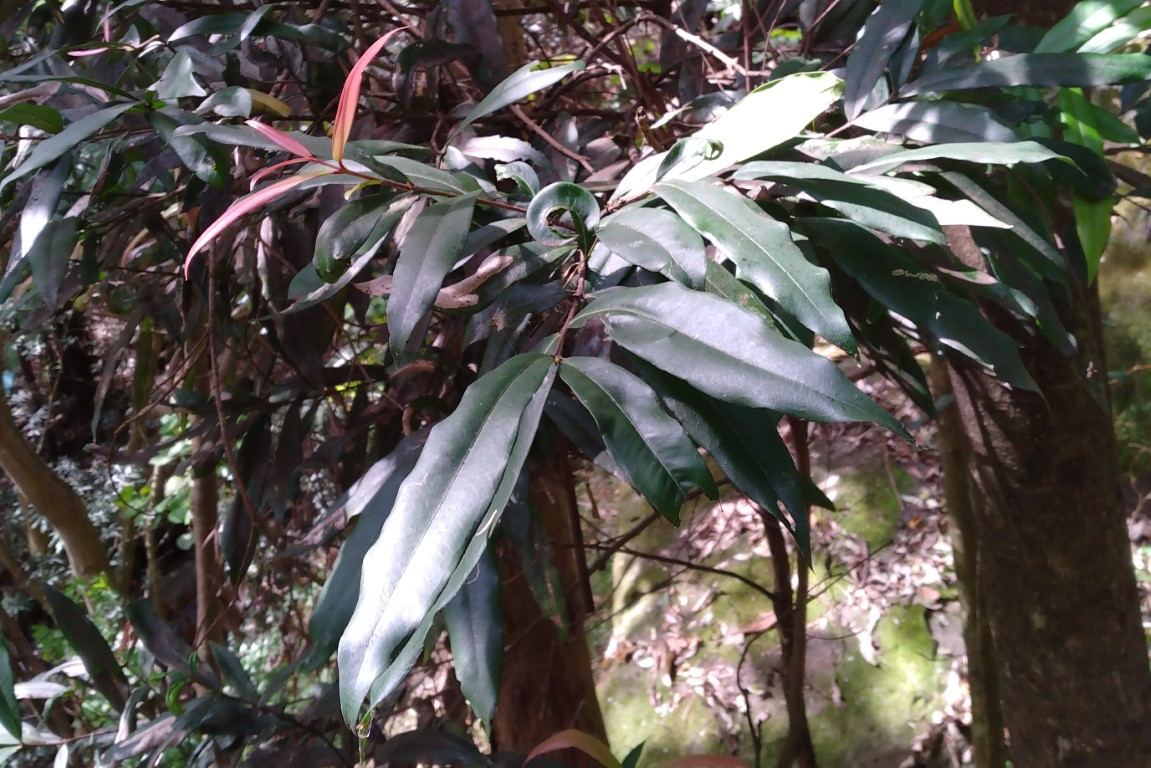
Leaves of Acmena ingens

Underside of leaf of Acmena ingens